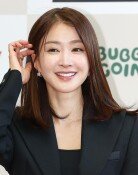Over one-third of Korean companies in ‘zombie’ state
Over one-third of Korean companies in ‘zombie’ state
Posted June. 14, 2023 07:55,
Updated June. 14, 2023 07:55
In 2022, the debt ratio for financially struggling companies in Korea reached its highest level in eight years due to multiple factors, including the increase in raw material prices. Reportedly, around 35% of Korean companies are currently classified as "zombie" companies, unable to meet their debt obligations.
On Tuesday, the Bank of Korea (BOK) released a 2022 corporate management analysis, indicating that sales revenue for Korea's 30,129 non-financial for-profit companies (12,199 in manufacturing and 17,930 in non-manufacturing sectors) grew by 16.9% compared to the previous year.
The profitability of the companies, however, declined with a 1.5% decrease in the operating profit ratio compared to the previous year's 6.8%, and a 2.4% drop in the pre-tax net profit ratio from the previous year's 7.6%. The operating profit ratio was similar to the level in 2020 (5.1%) when the economy was significantly impacted by COVID-19. The main reason for the decline in profitability is attributed to the rise in raw material prices.
Consequently, the Interest Coverage Rate (ICR) experienced a significant decline from 654.0% to 455.4%. This rate measures a company's ability to meet its debt obligations by dividing interest expenses by operating profits. The number of companies with an ICR below 100%, indicating an inability to cover financial expenses, including loan interests, from operating income, has increased by 1 percentage point to 35.1%.
With the debt ratio of companies in 2022 reaching an eight-year high of 102.4%, the financial stability indices have notably deteriorated, compared to 106.5% in 2014. Additionally, the ratio of total borrowings to total assets has almost reached a record level of 28.2%, narrowly falling short of 2019's 28.3%.
The BOK emphasized the significant growth in sales revenues. Both the manufacturing and non-manufacturing sectors experienced substantial increases, particularly in the oil-refining and cokes area, which rose from 48.4% to 66.9%. The automotive sector also saw growth from 11.8% to 15.2%, while the electric and gas sector in non-manufacturing surged from 13.2% to 46.8%. Lee Seong-hwan, the corporate statistics team leader of the BOK’s Economic Statistics Bureau, remarked that the situation appears better than expected. He attributed the remarkable increase in sales to price hikes and an improved market situation.
syeon@donga.com



![화장실 갇혔을 때 생존법…“최후에는 변기뚜껑” [알쓸톡]](https://dimg.donga.com/c/138/175/90/1/wps/NEWS/IMAGE/2025/12/26/133042007.3.png)



